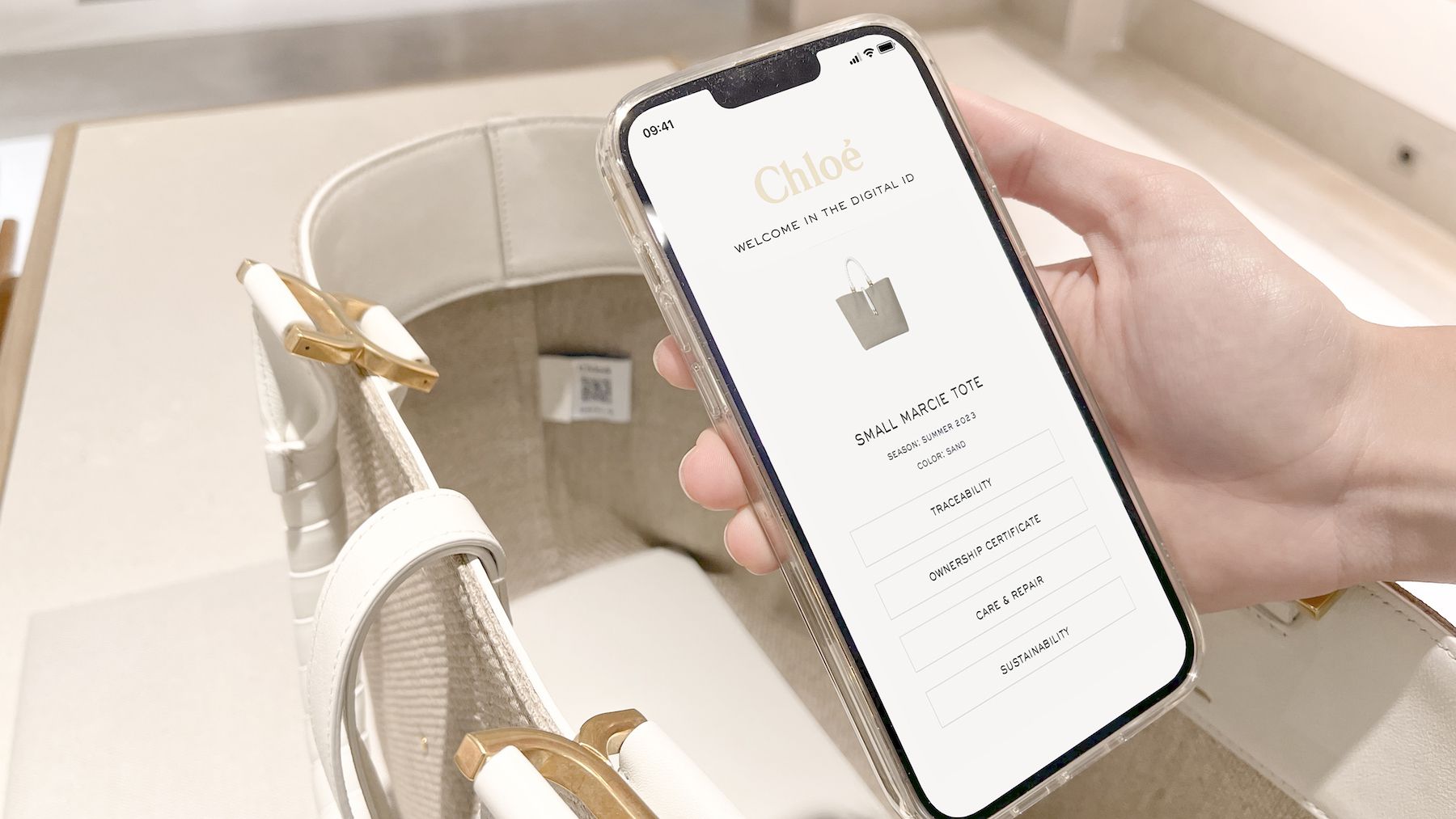
In some corners of the fashion industry, digital IDs are seen as a game-changer for efforts to shift shoppers to more responsible forms of consumption and big brands to better business models.
The idea is that simply by scanning a QR code consumers could get access to detailed information about the eco-credentials of their clothes and instructions for care and repair. In the same way, brands could link their customers to resale sites and, eventually, recycling solutions, smoothing out kinks that currently mean so many clothes end up in landfills.
On Thursday, Chloé launched a capsule collection designed to test how this could work in practice. The selection of bags, shoes and clothes promises total transparency from farm to finished piece at the touch of a smartphone. And it connects shoppers directly to the secondary market through a partnership with resale platform Vestiaire Collective.
The move is the most direct effort by any luxury brand so far to road-test how digital IDs could enable more circular business models, reflecting how much Chloé is betting on sustainability to help drive its turnaround plans since bringing on Gabriela Hearst as creative director in late 2020.
“We constantly challenge the way we do business and that includes what we sell but also how we sell it,” Chloé said in a response to emailed questions. “Working on our circularity approach is a major priority at the moment.”
To be sure, the concept of digital product labels has had mainstream buy-in since before the pandemic. But while plenty of brands are exploring the technology, rollout has been slow and relatively limited in its focus.
Part of the challenge is that, while the technology needed to roll out digital product labels is simple enough, gathering the data needed to support them is not. Really delivering on ambitions to unlock more transparent and circular business models requires brands to get a handle on their full supply chain and start collecting a range of technical data on environmental impact. Most currently have very limited visibility beyond their manufacturers.
Plugging into resale markets isn’t as tricky, but it is more fraught. Many luxury labels are still wary of secondhand sales channels, even as they eye opportunities created by their rapid growth. Kering has invested in Vestiaire Collective and brands including Gucci, Burberry and Alexander McQueen have tested partnerships with resale platforms. Balenciaga even launched its own resale programme last year. But longstanding concerns over cannibalisation, counterfeiting and brand erosion are holding others back.
“A lot of brands still hesitate to take a stance,” said Achim Berg, a senior partner at consultancy McKinsey & Co. “A lot of players are sitting on the fence and watching where this is heading.”
Chloé’s new programme offers a test case for whether digital IDs can help shift the position of luxury’s resale holdouts. The tech offers a neat solution for many outstanding concerns, allowing brands to retain control over the customer journey and authentication and benefit from sales on the secondary market.
“This is like the barcode for the circular economy,” said Natasha Franck, founder and chief executive at Eon, the technology company behind Chloé’s digital product labels. “It’s really a transition from selling a product to selling an asset for luxury right now.”
Chloé’s tech-enhanced capsule goes on sale Apr. 7 with 20 products, each connected to a web page that offers detailed manufacturing information, care and repair instructions, a certificate of authentication and resale at the click of a button via a platform co-branded with Vestiaire.
The digital IDs are designed to streamline the resale process, giving customers access to a pre-filled listing form and smoothing out authentication. The 12-month pilot with Vestiaire will run in the US, EU and UK, and resellers will be able choose to receive payment as either Vestiaire Collective or Chloé vouchers, or to make a donation to UNICEF’s gender-equality initiatives.
The brand’s initial collection of digitally enabled products includes a red dress manufactured by a social enterprise in Madagascar from linen sourced from a cooperative in Normandy and spun and woven in France. Leather bags and shoes use hides from French farms and tanneries. Wool comes from Gabriela Hearst’s family ranch in Uruguay and is spun and woven in Italy, while the silk is certified under the Global Organic Textile Standard.
Next season, the brand plans to roll out the digital IDs much more widely and expand them across its full range by 2025.
Meanwhile, momentum around the tech is growing more broadly, fuelled by regulatory moves and shifting attitudes towards resale.
“We are really at an interesting point because we had a phase of creating awareness, then we had a phase of commitment at the corporate level…We’re now in an experimentation and piloting phase before we really move to scale,” said Berg. “We’re going to see more pilots…there’s a high likelihood others will follow.”
For more BoF sustainability coverage, sign up now for our Weekly Sustainability Briefing by Sarah Kent.


